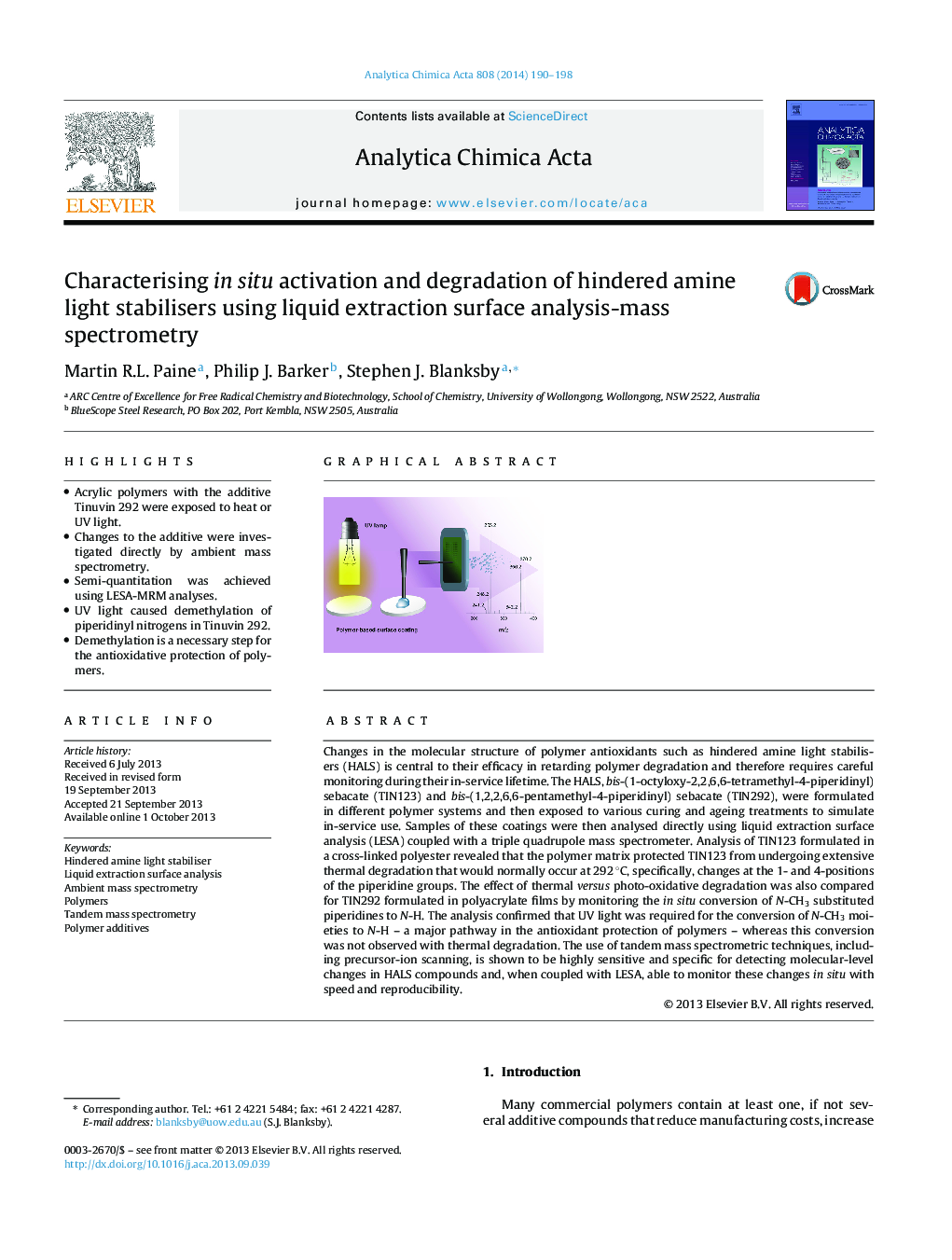| کد مقاله | کد نشریه | سال انتشار | مقاله انگلیسی | نسخه تمام متن |
|---|---|---|---|---|
| 1164441 | 1491024 | 2014 | 9 صفحه PDF | دانلود رایگان |
• Acrylic polymers with the additive Tinuvin 292 were exposed to heat or UV light.
• Changes to the additive were investigated directly by ambient mass spectrometry.
• Semi-quantitation was achieved using LESA-MRM analyses.
• UV light caused demethylation of piperidinyl nitrogens in Tinuvin 292.
• Demethylation is a necessary step for the antioxidative protection of polymers.
Changes in the molecular structure of polymer antioxidants such as hindered amine light stabilisers (HALS) is central to their efficacy in retarding polymer degradation and therefore requires careful monitoring during their in-service lifetime. The HALS, bis-(1-octyloxy-2,2,6,6-tetramethyl-4-piperidinyl) sebacate (TIN123) and bis-(1,2,2,6,6-pentamethyl-4-piperidinyl) sebacate (TIN292), were formulated in different polymer systems and then exposed to various curing and ageing treatments to simulate in-service use. Samples of these coatings were then analysed directly using liquid extraction surface analysis (LESA) coupled with a triple quadrupole mass spectrometer. Analysis of TIN123 formulated in a cross-linked polyester revealed that the polymer matrix protected TIN123 from undergoing extensive thermal degradation that would normally occur at 292 °C, specifically, changes at the 1- and 4-positions of the piperidine groups. The effect of thermal versus photo-oxidative degradation was also compared for TIN292 formulated in polyacrylate films by monitoring the in situ conversion of N-CH3 substituted piperidines to N-H. The analysis confirmed that UV light was required for the conversion of N-CH3 moieties to N-H – a major pathway in the antioxidant protection of polymers – whereas this conversion was not observed with thermal degradation. The use of tandem mass spectrometric techniques, including precursor-ion scanning, is shown to be highly sensitive and specific for detecting molecular-level changes in HALS compounds and, when coupled with LESA, able to monitor these changes in situ with speed and reproducibility.
Figure optionsDownload as PowerPoint slide
Journal: Analytica Chimica Acta - Volume 808, 15 January 2014, Pages 190–198
